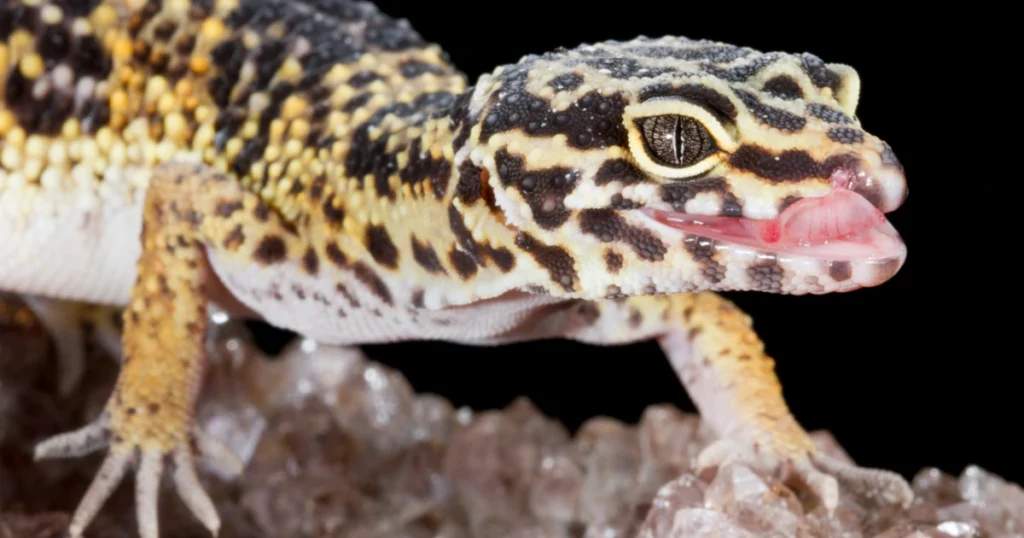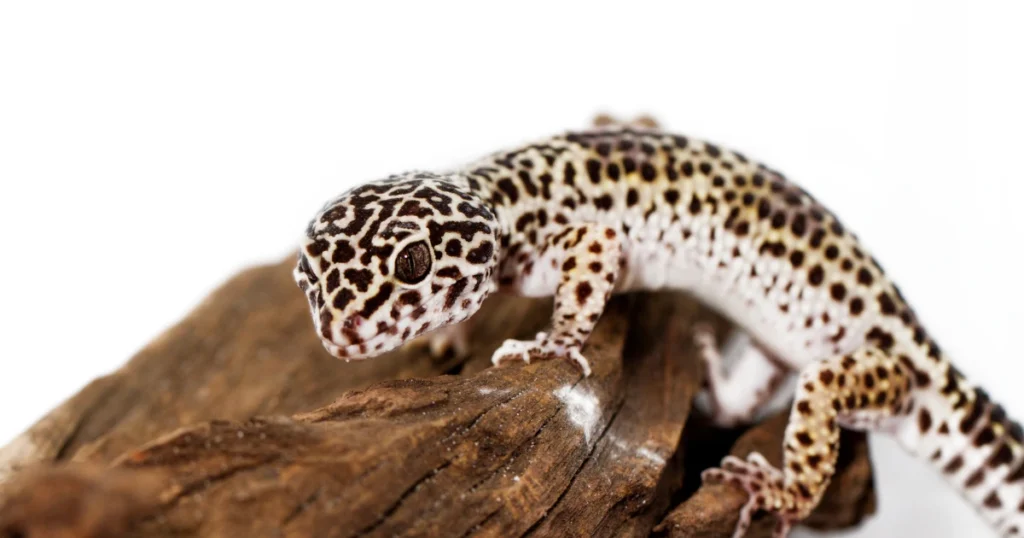As a dedicated leopard gecko owner, one of the most common questions that has probably crossed your mind is: “How long can leopard geckos go without heat?” This query often arises when planning vacations, dealing with power outages, or simply ensuring the well-being of your beloved pet.
Today, I’ll be diving deep into this topic, sharing my personal experiences and providing you with the knowledge you need to keep your leopard gecko happy and healthy.

Understanding the Importance of Heat for Leopard Geckos
Before we delve into the specifics of how long leopard geckos can go without heat, it’s crucial to understand why heat is so essential for these fascinating reptiles. Leopard geckos are ectothermic, meaning they rely on external sources of heat to regulate their body temperature.
Proper heat not only aids in digestion and metabolism but also plays a vital role in their overall well-being.
The Thermoregulation Dance
Imagine your leopard gecko as a little dancer, constantly adjusting its position to find the perfect temperature. In the wild, they would bask in the sun or seek shade to maintain their ideal body temperature.
In captivity, it’s our responsibility to provide them with the right thermal gradient, allowing them to move freely between warm and cool areas. Maintaining the appropriate temperature range is crucial for various reasons:
- Digestion: Leopard geckos require specific temperatures to properly digest their food, ensuring they receive the necessary nutrients.
- Shedding: Proper heat aids in the shedding process, allowing your gecko to shed its skin smoothly and completely.
- Breeding: For those interested in breeding leopard geckos, appropriate temperatures are essential for successful reproduction and egg incubation.
- Overall Health: Improper temperatures can lead to a suppressed immune system, lethargy, and other health issues.
So, How Long Leopard Geckos Can Go Without Heat?
Now, let’s address the million-dollar question: “How long can leopard geckos go without heat?” The answer, unfortunately, is not as straightforward as we’d like. It depends on various factors, including the ambient temperature, the duration of the heat loss, and the overall health of your gecko.
The Ambient Temperature Factor
If the ambient temperature in your home or reptile room remains within the acceptable range for leopard geckos (around 70-75°F or 21-24°C), your gecko may be able to survive for a few days without additional heating sources.
However, it’s important to note that this is not an ideal situation, and prolonged exposure to these temperatures can still lead to health issues.
The Duration of Heat Loss
The longer your leopard gecko goes without adequate heat, the greater the risk to its well-being. As a general rule of thumb, most experts recommend not allowing your gecko to go without heat for more than 24-48 hours.
Anything beyond this timeframe can potentially lead to serious health complications, such as digestive issues, respiratory problems, and weakened immunity.

The Overall Health Factor
It’s important to consider your leopard gecko’s overall health when determining how long it can go without heat. Geckos that are already in a compromised state or dealing with underlying health issues may be less resilient to temperature fluctuations.
In such cases, it’s best to err on the side of caution and ensure they have access to proper heating as soon as possible.
Preparing for Potential Heat Loss Situations
As responsible leopard gecko owners, it’s crucial to have a contingency plan in place for situations where heat loss may occur. Here are some tips to help you prepare
Power Outages and Backup Heating Solutions
Power outages can be a common cause of heat loss in reptile enclosures. To ensure your gecko’s safety during such events, consider investing in a backup heating solution. Options include:
- Hand warmers: These small, reusable warmers can provide temporary heat for a few hours.
- Ceramic heat emitters: These can be powered by a backup generator or battery-operated power source.
- Insulated enclosure covers: These can help retain heat within the enclosure for a longer period.
Traveling with Your Leopard Gecko
If you plan on traveling with your leopard gecko, you’ll need to ensure proper heating during transit and at your destination. Invest in a high-quality insulated carrying case or reptile carrier, and consider bringing a portable heat source, such as a hand warmer or a heated travel pad.
Preparing for Seasonal Changes
Seasonal changes can also impact the temperature in your reptile room or home. As cooler months approach, consider supplementing your existing heating setup with additional heat sources or investing in a space heater to maintain the appropriate temperatures.

Signs of Heat-Related Distress in Leopard Geckos
It’s crucial to recognize the signs of heat-related distress in your leopard gecko to take prompt action and prevent further complications. Here are some common indicators to watch out for:
- Lethargy: If your normally active gecko becomes lethargic or unresponsive, it could be a sign of temperature-related stress.
- Loss of Appetite: Geckos that are too cold or too hot may refuse to eat, as their digestive systems are not functioning properly.
- Difficulty Shedding: Improper temperatures can disrupt the shedding process, leading to stuck shed or incomplete shedding.
- Respiratory Issues: Cold temperatures can cause respiratory problems, such as wheezing or labored breathing.
- Abnormal Posture: If your gecko is hunched or stretching excessively, it may be attempting to regulate its body temperature.
If you notice any of these signs, it’s crucial to take immediate action to restore the appropriate temperature in your gecko’s enclosure.
Tips for Maintaining Optimal Heat Levels
Ensuring your leopard gecko has access to the proper heat sources is essential for their overall well-being. Here are some tips to help you maintain optimal heat levels:
Invest in High-Quality Heat Sources
When it comes to heating your leopard gecko’s enclosure, it’s essential to invest in high-quality heat sources. Look for reputable brands and products specifically designed for reptile enclosures. Some popular options include:
- Under-tank heaters: These provide belly heat, mimicking the warmth of the sun on the ground.
- Overhead ceramic heat emitters: These create a basking spot for your gecko to regulate its body temperature.
- Heat lamps: While effective, these need to be monitored closely to avoid overheating or bulb burnout.
FYI, I may earn a small commission if you click on some of the links in this post.
Thermostat and Temperature Monitoring
Invest in a reliable thermostat to maintain consistent temperatures within the enclosure. This device will automatically adjust the heat sources to keep the temperatures within the desired range. Additionally, consider using a digital thermometer or temperature gun to spot-check various areas of the enclosure, ensuring proper temperature gradients.
Proper Enclosure Setup
The enclosure setup plays a crucial role in maintaining optimal heat levels. Ensure that your leopard gecko’s enclosure is appropriately sized and features proper insulation to retain heat effectively. Provide a temperature gradient by creating warm and cool areas, allowing your gecko to thermoregulate as needed.
Regular Maintenance and Cleaning
Regularly maintaining and cleaning your leopard gecko’s enclosure can help ensure efficient heat distribution and prevent potential hazards. Remove any accumulated waste or debris, and replace any worn-out heat sources or equipment as needed.

The Importance of Seeking Professional Advice
While this guide provides valuable information on how long leopard geckos can go without heat, it’s important to remember that every gecko is unique, and their specific needs may vary.
If you have any concerns or doubts, it’s always best to seek professional advice from a reptile veterinarian or an experienced leopard gecko breeder.
These experts can provide personalized guidance based on your gecko’s age, health status, and specific living conditions. They may also offer additional tips and recommendations to ensure your leopard gecko’s optimal well-being.
Final Thoughts
Maintaining the right temperature is crucial for the health and happiness of your leopard gecko. While they may be able to survive for a short period without heat, prolonged exposure to improper temperatures can have severe consequences.
By understanding the importance of heat, recognizing signs of distress, and implementing contingency plans, you can ensure your beloved pet remains comfortable and thriving. Remember, as responsible leopard gecko owners, it’s our duty to provide them with the best possible care, and that includes ensuring they have access to the appropriate heat sources at all times.
So, the next time you find yourself wondering, “How long can leopard geckos go without heat?” remember that the answer lies in being proactive, vigilant, and always putting your gecko’s well-being first.
Over to You
Do you have any personal experiences or tips to share about maintaining proper heat levels for leopard geckos? Have you ever faced a situation where your gecko went without heat for an extended period? We’d love to hear your stories and insights in the comments below.
Don’t forget to share this article with fellow leopard gecko enthusiasts who might find this information valuable. Together, we can ensure our scaly friends receive the best possible care they deserve.

Wonderful web site Lots of useful info here Im sending it to a few friends ans additionally sharing in delicious And obviously thanks to your effort